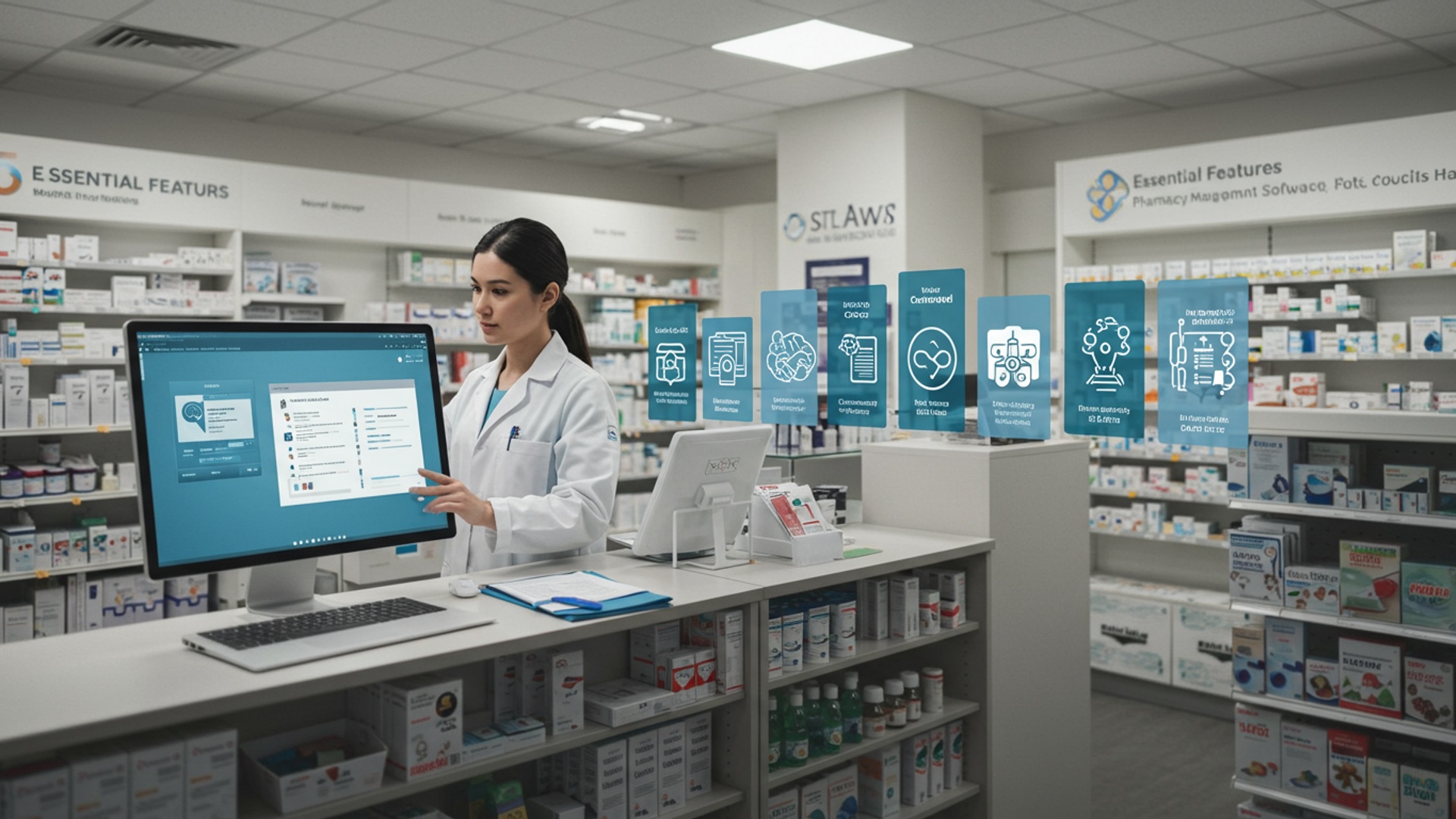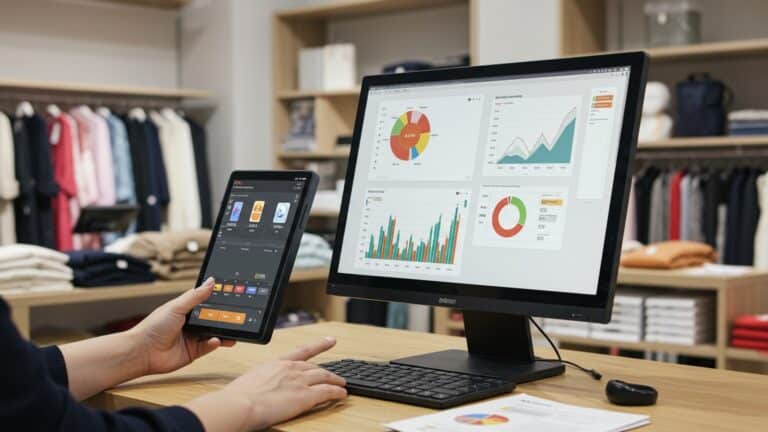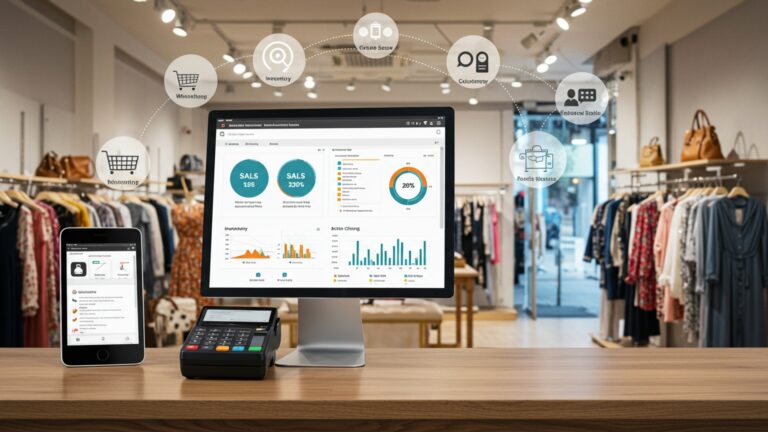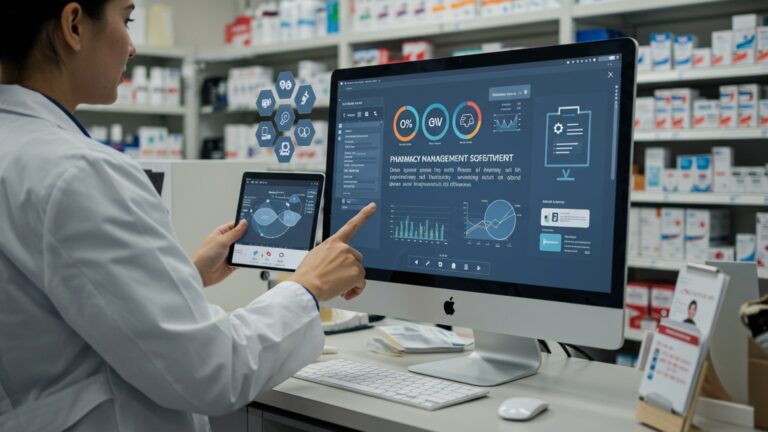5 Essential Features Your Pharmacy Management Software Must Have
Modern pharmacies navigate a complex ecosystem where efficiency, patient safety. regulatory compliance are paramount. Robust pharmacy management software is no longer a luxury but a strategic imperative, directly impacting patient outcomes and operational resilience. From streamlining e-prescribing workflows and managing intricate inventory with DSCSA traceability to facilitating comprehensive medication therapy management (MTM) services, the demands on these systems are escalating. The right platform transforms daily operations, moving beyond mere transaction processing to empower enhanced clinical decision-making and ensure seamless data exchange across the healthcare continuum, safeguarding both your practice and your patients.

1. Comprehensive Prescription Management: The Core of Pharmacy Operations
At the heart of any thriving pharmacy lies its ability to efficiently and safely manage prescriptions. A truly essential feature of your pharmacy management software is a robust, comprehensive prescription management module. This isn’t just about typing in a prescription; it encompasses the entire lifecycle from receipt to dispense and beyond.
- E-Prescribing Integration
- Clinical Decision Support (CDS)
- Refill Management and Authorization
- Dispensing and Labeling Automation
The ability to seamlessly receive electronic prescriptions directly from prescribers is paramount. This minimizes manual entry errors, reduces fraud. streamlines the workflow. Systems like SureScripts in the U. S. have standardized this. your software must be compatible.
This feature is a non-negotiable for patient safety. The software should automatically flag potential drug-drug interactions, drug-allergy interactions, duplicate therapy, excessive dosages. contraindications based on the patient’s profile. For instance, if a patient is prescribed a new medication that interacts negatively with an existing one, the system should issue an immediate alert, prompting the pharmacist for intervention.
Efficiently tracking refill requests, automatically sending requests for prescriber authorization when needed. managing pending refills ensures patients receive their medications on time without unnecessary delays.
The software should integrate with dispensing equipment (e. g. , automated counting machines) and generate accurate, clear prescription labels compliant with all regulatory requirements. This includes patient details, drug name, dosage, directions. any necessary warnings.
Imagine a busy Saturday morning. A patient brings in a new prescription for an antibiotic. Your pharmacy management software immediately processes the e-prescription, checks the patient’s profile. alerts you to a severe allergy to a similar class of antibiotics. This critical alert allows you to contact the prescriber for an alternative, potentially preventing a life-threatening allergic reaction. This proactive safety net is an invaluable aspect of modern pharmacy practice.
2. Robust Inventory Management with Automated Reordering
For a pharmacy, inventory is cash. Inefficient inventory management leads to stockouts, lost sales, expired medications. significant financial waste. A sophisticated inventory management system within your pharmacy management software is crucial for maintaining profitability and ensuring patient access to medications.
- Real-time Stock Tracking
- Automated Reordering
- Expiry Date Management
- Controlled Substance Tracking
Knowing exactly what you have on hand, where it is. its expiration date is fundamental. The system should update inventory levels automatically as prescriptions are dispensed and new stock is received.
This is where modern software truly shines. Based on historical sales data, current stock levels, lead times. predefined reorder points, the software should automatically generate purchase orders for suppliers. This prevents overstocking and understocking. For example, if your system identifies a consistent demand for a particular diabetes medication and current stock falls below a set threshold, it will automatically suggest or even initiate an order.
Critical for patient safety and waste reduction, the software should track batch numbers and expiration dates, alerting staff to soon-to-expire medications. This allows for proactive strategies like returning expiring stock or prioritizing its dispensing.
This specialized feature is absolutely vital for regulatory compliance. The software must meticulously track every unit of controlled substances from receipt to dispense, providing an unalterable audit trail. This integration with state Prescription Drug Monitoring Programs (PDMPs) is often a legal requirement, significantly reducing the risk of diversion and abuse.
Comparison: Manual vs. Automated Inventory Management
| Feature | Manual Inventory | Automated Inventory (via Pharmacy Management Software) |
|---|---|---|
| Accuracy | Prone to human error, miscounts, data entry mistakes. | High accuracy due to automation; real-time updates. |
| Efficiency | Time-consuming, requires significant staff hours for counting, ordering, reconciliation. | Significantly reduces manual effort; frees up staff for patient care. |
| Cost-Effectiveness | Higher risk of stockouts (lost sales) and expired stock (waste). | Optimized stock levels, reduced waste, improved cash flow. |
| Compliance | Difficult to maintain detailed, auditable records for controlled substances. | Built-in compliance features, automated PDMP reporting, robust audit trails. |
| Reporting | Limited and often requires manual compilation. | Comprehensive reports on sales trends, inventory turnover, cost analysis. |
Prioritize a pharmacy management software that offers highly granular inventory control, including automated reordering and expiry date tracking. This will not only save you money but also ensure you consistently have the medications your patients need.
3. Seamless Integrated Billing and Reimbursement
Navigating the complexities of insurance claims, co-pays. reimbursements can be a full-time job in itself. An essential feature of any modern pharmacy management software is its ability to streamline and automate the billing and reimbursement process, ensuring timely payments and minimizing denied claims.
- Direct Payer Integration
- Automated Claims Submission and Adjudication
- Co-pay and Deductible Management
- Reconciliation and Reporting
- Prior Authorization (PA) Support
The software should connect directly with major pharmacy benefit managers (PBMs) and insurance providers, allowing for real-time eligibility checks and claims submission. This immediate feedback loop helps identify and correct issues before the claim is fully processed.
After dispensing, the system should automatically generate and submit claims electronically. During adjudication, it should process responses, identify any rejections or reversals. provide clear reasons for denials.
Accurately calculating and collecting patient co-pays and tracking deductibles is vital. The software should display this details clearly at the point of sale and manage patient accounts for outstanding balances.
Post-adjudication, the software should facilitate the reconciliation of payments received against claims submitted. Robust reporting tools allow pharmacies to review claim trends, identify common denial reasons. optimize their billing practices.
For many specialized or high-cost medications, prior authorization is required. The software should assist in identifying medications that need PA and provide tools or workflows to manage the submission process, often integrating with platforms like CoverMyMeds.
A patient arrives to pick up a high-cost specialty medication. Your pharmacy management software, through its integrated billing module, automatically checks their insurance eligibility, determines that a prior authorization is required. even helps generate the necessary forms or links to the PA portal. This proactive identification prevents the patient from leaving without their medication and avoids a costly claim denial later.
According to a report by the National Community Pharmacists Association (NCPA), administrative burden related to third-party payers is a significant challenge for independent pharmacies. A highly integrated billing module can drastically reduce this burden, allowing pharmacists to focus more on patient care and less on paperwork.
4. Comprehensive Patient Management and Engagement Tools
Beyond dispensing medications, modern pharmacies are becoming integral hubs for patient health and wellness. A powerful pharmacy management software empowers this shift by providing robust patient management and engagement features that enhance adherence, improve health outcomes. build stronger patient relationships.
- Detailed Patient Profiles
- Medication Adherence Tracking
- Communication Tools
- Immunization and Clinical Service Tracking
- Patient Portal Integration
Far more than just contact details, these profiles should include comprehensive medication history (including non-pharmacy dispensed drugs if input manually), allergies, medical conditions, preferred communication methods, insurance details. even lifestyle notes.
The software should track refill patterns and identify patients who are due for refills but haven’t picked them up. This allows pharmacists to proactively reach out, offering counseling or reminders, which is crucial for managing chronic conditions.
Integrated messaging capabilities (SMS, email) for refill reminders, medication pick-up alerts, health tips. appointment scheduling. This personalized communication enhances patient engagement significantly.
As pharmacies expand their services to include vaccinations, point-of-care testing. medication therapy management (MTM), the software must be able to document these services, track outcomes. bill for them appropriately.
A secure patient portal allows patients to request refills, view their medication history, access educational resources. communicate securely with their pharmacy, fostering greater independence and engagement.
“Before we upgraded our pharmacy management software, medication adherence for our diabetic patients was a constant struggle,” shares Sarah Chen, owner of Evergreen Pharmacy. “The new system’s adherence tracking module identified several patients who were consistently late with their refills. We used the integrated messaging feature to send personalized reminders and offer brief counseling sessions. Within six months, we saw a 15% improvement in adherence rates for this group, directly impacting their health outcomes.”
Look for pharmacy management software that not only manages prescriptions but also provides tools to proactively engage with patients. This turns your pharmacy into a true healthcare partner, not just a dispenser of drugs.
5. Robust Regulatory Compliance and Comprehensive Reporting
Operating a pharmacy means navigating a complex web of local, state. federal regulations. A top-tier pharmacy management software acts as your primary tool for ensuring compliance, mitigating risks. providing the necessary data for audits and business intelligence.
- HIPAA Compliance
- Controlled Substance Reporting (e. g. , PDMP Integration)
- Audit Trails and Activity Logs
- Business Analytics and Reporting
- Regulatory Updates and Adaptability
The software must be designed from the ground up to protect Protected Health data (PHI). This includes secure data storage, access controls (role-based permissions), audit trails of all user activity. encrypted communication channels.
As noted before, automated, real-time reporting to state Prescription Drug Monitoring Programs (PDMPs) is a critical feature, often mandated by law. This helps combat the opioid crisis and ensures strict accountability for controlled substances.
Every action taken within the software – from prescription entry to inventory adjustments to patient profile access – should be logged with a timestamp and user ID. This provides an irrefutable record for internal oversight and external audits.
Beyond compliance, the software should offer powerful reporting capabilities to provide actionable insights into your pharmacy’s performance. This includes reports on sales trends, inventory turnover, dispensing volumes, gross profit margins, prescription mix (e. g. , generics vs. brands). staff productivity.
The healthcare landscape is constantly changing. A high-quality pharmacy management software vendor will provide regular updates to ensure the software remains compliant with new regulations (e. g. , changes in billing codes, drug classification, or reporting requirements).
<log_entry> <timestamp>2023-10-27T14:35:01Z</timestamp> <user_id>john. doe@pharmacy. com</user_id> <action>Dispense_Prescription</action> <patient_id>P12345</patient_id> <drug_id>DRUG6789</drug_id> <quantity>30</quantity> <prescription_id>RX98765</prescription_id> <status>Success</status>
</log_entry<
This type of detailed logging is crucial for demonstrating compliance during an audit. Without it, proving adherence to regulations becomes incredibly challenging.
When evaluating pharmacy management software, scrutinize its compliance features. Ask about HIPAA safeguards, PDMP integration. the robustness of its audit trails. A system that proactively supports regulatory adherence is an investment in your pharmacy’s long-term security and reputation.
Conclusion
A robust pharmacy management system is more than just a tool; it’s the strategic backbone of your operations. When evaluating solutions, remember the core pillars: seamless prescription processing, intelligent inventory control, secure patient record management, comprehensive billing. insightful analytics. These aren’t mere features; they are necessities for today’s dynamic healthcare landscape. My personal tip for pharmacy owners is to meticulously audit your current workflow before exploring software demos. Understanding your specific bottlenecks will sharpen your focus during evaluation. Don’t compromise on real-time inventory updates or robust e-prescribing integration; I’ve personally seen these features dramatically enhance patient safety and operational efficiency. The current trend clearly favors integrated, cloud-based platforms that offer superior data security and interoperability, aligning with recent advancements in digital health. Investing in the right software isn’t just an expense; it’s a strategic move towards future resilience, heightened patient trust. sustainable profitability. Embrace this digital transformation to empower your team and elevate your service standards.
More Articles
Discover 7 Essential Features Your Pharmacy POS System Must Include
Learn How 7 Top Pharmacy POS System Benefits Boost Your Business
Learn How to Maximize Pharmacy Billing Software Efficiency 5 Key Steps
How to Select and Implement POS Software A Comprehensive Guide for Business Success
Mastering Cloud Based POS Software How to Boost Your Business Efficiency
FAQs
Why is robust inventory management crucial for my pharmacy operations?
Good inventory management in your software means you’re always stocked with what patients need. not overstocked on items that just sit. It helps prevent costly waste from expired medications, reduces the chances of running out of popular drugs. ultimately saves you money while keeping your patients happy.
How does pharmacy management software make prescription dispensing safer and more efficient?
It significantly boosts safety and speed! The software helps by flagging potential drug interactions, checking for correct dosages. maintaining comprehensive patient profiles. This minimizes human error, streamlines the filling process. ensures you’re providing the most accurate care quickly.
Can this software actually simplify the nightmare of insurance claims and billing?
Absolutely! Modern pharmacy software takes a lot of the pain out of billing. It can automate claims submissions directly to insurance companies, verify patient eligibility in real-time. track payments. This means fewer denied claims, faster reimbursements. way less paperwork for your team.
What kind of useful insights can I get from the reporting and analytics features?
You can unlock a treasure trove of data! The software can generate reports on sales trends, the most popular medications, inventory turnover. even patient demographics. This helps you make smarter business decisions, optimize your stock. identify areas where your pharmacy can improve or grow.
My patients’ data is sensitive. How does pharmacy management software ensure its security and compliance?
Security is paramount. Essential software comes with features like data encryption, multi-level access controls. audit trails to protect patient data from unauthorized access. It’s also designed to help your pharmacy comply with crucial regulations like HIPAA, ensuring you meet legal and ethical standards for data privacy.
What about connecting with other systems, like e-prescribing or my EHR? Is that something good software can do?
Definitely! A top-tier pharmacy management system should offer strong integration capabilities. This means it can ‘talk’ to e-prescribing platforms, electronic health records (EHRs). even wholesale distributors. This seamless data flow reduces manual entry errors, improves communication across healthcare providers. creates a much more efficient workflow for your pharmacy.






